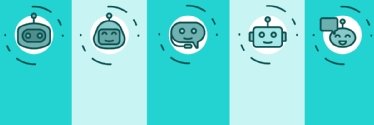Development tools for continuous software delivery
Software developers build applications faster when they have the right tools. Review the essential tools every software developer needs, such as Git, Jenkins, IDEs such as Eclipse and build tools including Maven and Gradle. Also, gain insight into how AI and machine learning are pushing software development tool capabilities to new levels to help developers generate quality code.
Top Stories
-
Quiz
16 Sep 2025

More AWS Cloud Practitioner practice exam questions
Ready to take the next step in your cloud career? These AWS cloud practitioner practice exam questions will test your knowledge about key AWS services and capabilities. Continue Reading
By- Cameron McKenzie, TechTarget
-
Quiz
04 Sep 2025

10 questions for AWS Certified Cloud Practitioner exam prep
Technical IT professionals could benefit from an AWS Certified Cloud Practitioner certification on their resume. These 10 questions can help gauge your exam readiness. Continue Reading
By- Cameron McKenzie, TechTarget
-
Blog Post
02 Oct 2025

How to git push an existing project to GitLab
Want to push a new project into an existing GitLab repository? Follow these steps, but beware one way that will work but might cause trouble on a shared repo. Continue Reading
By- Cameron McKenzie, TechTarget
-
Blog Post
30 Sep 2025

Install the Eclipse IDE on Windows video tutorial
Need to install the Eclipse IDE on Windows? This quick video tutorial shows you how to install Eclipse and build your very first Java application in the popular, open-source IDE. Continue Reading
By- Cameron McKenzie, TechTarget
-
Blog Post
30 Sep 2025

Quickly generate, add and setup GitLab SSH Keys
To connect Git operations securely to your GitLab repository, you will need to configure GitLab SSH keys both locally and remotely. Here's a quick example of how to do it. Continue Reading
By- Cameron McKenzie, TechTarget
-
Blog Post
30 Sep 2025

GitHub Desktop Tutorial for beginners
Need to learn how to use GitHub Desktop? This quick and thorough GitHub Desktop tutorial for beginners will teach you all the fine points of source code management both locally and in the cloud. Continue Reading
By- Cameron McKenzie, TechTarget
-
Blog Post
29 Sep 2025

How to discard local changes in Git
Don't overlook a file or two when you attempt to remove and discard local, uncommitted changes in Git. Learn how to locally revert and remove uncommitted changes to files in Git properly. Continue Reading
By- Cameron McKenzie, TechTarget
-
Blog Post
25 Sep 2025

Set a Git stash message. Pop with a Git stash name
Developers need to name their git stashes and add a message if they want to easily identify them in the future. Here's how to pop and apply a specific Git stash by name. Continue Reading
By- Cameron McKenzie, TechTarget
-
Blog Post
25 Sep 2025

How to find and use a GitHub URL by example
This example shows you how you can find and use the GitHub URL. Clone, fetch, push and pull to your remote repo easily with the GitHub URL at your disposal. Continue Reading
By- Cameron McKenzie, TechTarget
-
Blog Post
23 Sep 2025

Git reset hard vs. soft: What's the difference?
Both hard and soft git reset commands manipulate the commit history. Where soft vs. hard git reset commands differ is by how they impact the index and the local filesystem. Continue Reading
By- Cameron McKenzie, TechTarget
-
Blog Post
22 Sep 2025

git@github: permission denied (PublicKey) SSH error fix
Here are the three most common fixes to GitHub 'Permission denied (publickey)' SSH error. Continue Reading
By- Cameron McKenzie, TechTarget
-
Blog Post
22 Sep 2025

How to delete local and remote Git branches
There's no single Git command that will delete a remote and local Git branch. But these two commands will get the job done. Need to delete remote and local Git branches? Here's how to do it. Continue Reading
By- Cameron McKenzie, TechTarget
-
Blog Post
22 Sep 2025

Create your first Python AWS Lambda function in minutes
Want to quickly create an AWS Lambda function in Python? This quick Python and AWS tutorial shows how to develop, test and deploy your first Python Lambda function in just a few minutes. Continue Reading
By- Cameron McKenzie, TechTarget
-
Blog Post
20 Sep 2025

How to git push an existing project to GitHub
If you start development before you set up version control, you may need to push your development project to an existing GitHub repo. This Git and GitHub example shows you the fastest way to ... Continue Reading
By- Cameron McKenzie, TechTarget
-
Blog Post
19 Sep 2025

(Brackets) vs {braces} vs [parentheses]: What's the difference?
Stop using the terms square brackets, round brackets and squiggly brackets. Use the terms braces, brackets and parenthesis instead. Here's the difference between them. Continue Reading
By- Darcy DeClute, Scrumtuous Inc.
-
Blog Post
17 Sep 2025

How to clone a specific git commit
Need to git clone a specific commit? There's no single command to do it, but clever use of branch and reset commands makes it possible to clone a single, specific git commit. Continue Reading
By- Cameron McKenzie, TechTarget
-
Blog Post
16 Sep 2025

How to install Git on Windows
Need to install Git on Windows? This quick Git install tutorial shows you how to quickly download, install and configure Git on Windows 10. Continue Reading
By- Cameron McKenzie, TechTarget
-
Quiz
16 Sep 2025

More AWS Cloud Practitioner practice exam questions
Ready to take the next step in your cloud career? These AWS cloud practitioner practice exam questions will test your knowledge about key AWS services and capabilities. Continue Reading
By- Cameron McKenzie, TechTarget
-
Blog Post
14 Sep 2025

How to create a Git repository
To get started with Git, you need a git repository. This quick tutorial will show you how to use "git init" to quickly create a git repo on your local machine. Continue Reading
By- Cameron McKenzie, TechTarget
-
Blog Post
13 Sep 2025

The git add command for beginners
The Git index, along with the need to use the "git add" command before performing a commit, is often a source of confusion for beginners. These "git add" examples will make things clear. Continue Reading
By- Cameron McKenzie, TechTarget
-
Blog Post
13 Sep 2025

How to amend a git commit
The easiest way to undo a git commit is with the git commit --amend command. This quick tutorial will show you how to quickly amend any Git commit. Continue Reading
By- Cameron McKenzie, TechTarget
-
Quiz
04 Sep 2025

10 questions for AWS Certified Cloud Practitioner exam prep
Technical IT professionals could benefit from an AWS Certified Cloud Practitioner certification on their resume. These 10 questions can help gauge your exam readiness. Continue Reading
By- Cameron McKenzie, TechTarget
-
Video
03 Sep 2025

Amazon Bedrock tutorial for agentic AI in AWS
Looking to build an AWS-based agentic AI application? Then look no further than Amazon Bedrock and it's machine learning capabilities. Continue Reading
By- Cameron McKenzie, TechTarget
-
Video
03 Sep 2025

Free website hosting with GitHub Pages tutorial
Looking for free website hosting? For a low traffic site, few options are as reliable and easy to use as GitHub Pages. Continue Reading
By- Cameron McKenzie, TechTarget
-
Definition
03 Sep 2025

What is Capability Maturity Model (CMM)?
The Capability Maturity Model (CMM) is a methodology used to develop and refine an organization's software development process. Continue Reading
By- Paul Kirvan
- Ben Lutkevich, Site Editor
-
Blog Post
02 Sep 2025

How to git clone a specific branch
Need to git clone a single, specific branch? In this quick example, we show you how to git clone a specific branch to help save your builds time and space. Continue Reading
By- Cameron McKenzie, TechTarget
-
Blog Post
01 Sep 2025

System, global and local Git config files on Windows and Linux
Ubuntu, Linux and Windows Git configuration files are an unwieldy mess. Or at least is seems that way when you realize it's contained in three uniquely named files and spread across three or four ... Continue Reading
By- Cameron McKenzie, TechTarget
-
Blog Post
31 Aug 2025

Git push new local branch to remote
Did you create a new Git branch? Need to push that local Git branch to a remote repo like GitHub, BitBucket or GitLab? This example shows you how to git push new local branches remotely. Continue Reading
By- Cameron McKenzie, TechTarget
-
Blog Post
31 Aug 2025

GitKraken tutorial for beginners
Who needs a GitKraken crash course? For those who want a top-tier Git GUI tool that can help accelerate software development, this GitKraken tutorial for beginners is for you. Continue Reading
By- Cameron McKenzie, TechTarget
-
Blog Post
30 Aug 2025

False positives vs false negatives in machine learning
What's the difference between a false positive and a false negative? It's an abstract concept in statistics, but it can have deathly implications in real world applications. Continue Reading
By- Cameron McKenzie, TechTarget
-
Blog Post
29 Aug 2025

Sourcetree tutorial for beginners
Need to learn Sourcetree and Bitbucket? This complete Bitbucket and Sourcetree tutorial will help you quickly master these industry leading Git tools. Continue Reading
By- Cameron McKenzie, TechTarget
-
Blog Post
28 Aug 2025

The good, bad and ugly of vibe coding -- and where it wins
Vibe coding seeks a natural rhythm where human insight and artificial intelligence create something better than either could produce alone. But only if developers stay in the driver's seat. Continue Reading
By- Joseph B. Ottinger, EnigmaStation
-
Tip
26 Aug 2025

Developers and vibe coding: 4 survival tips in the AI age
Programmers can stay a step ahead of AI agents and vibe coding by focusing on four areas: precise AI prompts, a broad architectural perspective, keen analysis and imagination. Continue Reading
By- Bob Reselman, CogArtTech
-
Video
25 Aug 2025

Deploy apps faster with this AWS Elastic Beanstalk tutorial
AWS Elastic Beanstalk simplifies the deployment of Python, Ruby and Node.js applications. This tutorial shows how to quickly launch applications without complex setup procedures. Continue Reading
By- Cameron McKenzie, TechTarget
-
Blog Post
23 Aug 2025

How to list and show the git stash history
Show your shelved change history with git stash list and show. Continue Reading
By- Cameron McKenzie, TechTarget
-
Tutorial
22 Aug 2025

Vibe coding tutorial with Replit and GitHub Copilot
Vibe coding, or using AI agents to create application code, is all the rage today. This video tutorial shows how it works using popular AI tools Replit and GitHub Copilot. Continue Reading
By- Bob Reselman, CogArtTech
-
Video
21 Aug 2025

Transfer out of GoDaddy and into Amazon Route 53
If you're using AWS for API gateways and S3 buckets, it makes sense to host your domain there as well. Here's how to transfer out of GoDaddy and into Amazon Route 53. Continue Reading
By- Cameron McKenzie, TechTarget
-
Definition
12 Aug 2025

What are functional requirements?
Functional requirements are the desired operations of a program or system. Continue Reading
By -
Blog Post
08 Aug 2025

What is Maven in Java? Crash course tutorial for beginners
Need to learn Apache Maven fast? This crash course Maven tutorial will quickly get you up to speed on the popular, open-source, Java build tool. Continue Reading
By- Cameron McKenzie, TechTarget
-
Video
08 Aug 2025

Java, Spring Boot and AWS' Elastic Beanstalk
Think Java and Spring Boot applications are cumbersome to deploy? Let's let Amazon's Beanstalk put that myth to rest. Continue Reading
By- Cameron McKenzie, TechTarget
-
Definition
08 Aug 2025

What is a private API?
A private API is an application programming interface that's designed for use within an organization and not for external consumption. Continue Reading
By -
Blog Post
07 Aug 2025

How to login to Docker with a Docker Hub access token
Have you been snared by Docker's "unauthorized: incorrect username or password" error when you login at the command line? Here's how to generate an access token in Docker Hub and fix it. Continue Reading
By- Cameron McKenzie, TechTarget
-
Blog Post
03 Aug 2025

Java and AI: Platform evolution or ecosystem extinction?
In this age of AI agents and vibe coding, does the Java platform still matter? Yes, and it's not going anywhere, for three big reasons. Continue Reading
By- Joseph B. Ottinger, EnigmaStation
-
Blog Post
03 Aug 2025

How to rename a Git branch
Here's a quick example that shows you how to rename a Git branch locally and remotely. The branch renaming commands and techniques work with GitHub, GitLab, Bitbucket and any cloud-based Git vendor. Continue Reading
By- Cameron McKenzie, TechTarget
-
Blog Post
01 Aug 2025

Clean Git up! Prune branches and shrink your Git repository
There comes a time where you must clean up Git branches, commits and the repository as a whole. Here we show you how to compact your Git repo and keep things clean. Continue Reading
By- Cameron McKenzie, TechTarget
-
Blog Post
31 Jul 2025

How to 'undo a git add' before you commit
Want to unstage a file in Git? Use the restore command. Other options to have Git unstage a file from the index have unintended consequences you'd really rather avoid. Continue Reading
By- Cameron McKenzie, TechTarget
-
News
29 Jul 2025

What Amazon Q prompt injection reveals about AI security
Experts say a malicious prompt injection in the Amazon Q extension for VS Code doesn't represent a fundamentally new threat, but reflects how AI amplifies security risks. Continue Reading
By- Beth Pariseau, Senior News Writer
-
Definition
21 Jul 2025

What is Java Development Kit (JDK)?
The Java Development Kit (JDK) is a development environment for building Java applications and applets that can then run on any Java Virtual Machine (JVM). Continue Reading
By- Rahul Awati
- Cameron McKenzie, TechTarget
-
Blog Post
18 Jul 2025

How to use Java's var keyword
While the use of var in Java brings inferred typing to the platform, it does not negate Java's dedication to strong typing. Here's how the Java var keyword works, along with simple examples of how ... Continue Reading
By- Cameron McKenzie, TechTarget
-
Video
14 Jul 2025

An Amazon Bedrock tutorial for beginners
Interested in generative AI development but don't want the overhead of managing infrastructure? This Amazon Bedrock tutorial might be the answer for you. Continue Reading
By- Cameron McKenzie, TechTarget
-
Blog Post
13 Jul 2025

How to enable Java 21 preview features
Java 21 includes numerous highly anticipated preview features including String templates, scoped variables and unnamed classes. Here's how to enable Java 21 preview features on your JDK. Continue Reading
By- Cameron McKenzie, TechTarget
-
Tip
11 Jul 2025

Spring, Quarkus or Jakarta EE? How to choose a Java framework
Choosing a Java framework is not about which one is best, it's about accepting their tradeoffs of stability, flexibility and complexity. Here's how to evaluate each vs. your needs. Continue Reading
By- Joseph B. Ottinger, EnigmaStation
-
Video
10 Jul 2025

How to configure multiple AWS CLI authentication credentials
Need to configure multiple AWS accounts in the CLI tool? It's barely an inconvenience with the AWS CLI tool. Continue Reading
By- Cameron McKenzie, TechTarget
-
Video
10 Jul 2025

Create an Amazon EKS cluster and deploy Docker containers
Docker deployment to EKS containers in AWS is much easier than you might think. This quick Amazon EKS tutorial shows you how. Continue Reading
By- Cameron McKenzie, TechTarget
-
News
08 Jul 2025

Knime updates framework for agentic AI development
The open source analytics vendor is keeping up with competitors by providing features aimed at enabling users to create cutting-edge applications capable of autonomous action. Continue Reading
By- Eric Avidon, Senior News Writer
-
Tip
27 Jun 2025

12 DevSecOps tools to secure each step of the SDLC
DevSecOps tools integrate security throughout development. These 12 options enhance workflows from coding to deployment without slowing teams down. Continue Reading
-
News
26 Jun 2025

Vibe coding with AI sparks debate, reshapes developer jobs
The 'vibe coding' catchphrase shows that GenAI is transforming software developer jobs -- but just how much change is coming? It depends on who you ask. Continue Reading
By- Beth Pariseau, Senior News Writer
-
Tip
12 Jun 2025

The case against vibe coding
Is vibe coding a bad idea for enterprises? AI can produce results faster than manual coding, but its benefits eventually unravel due to hidden costs and complexities. Here's why. Continue Reading
By- Walker Aldridge, Lairds Computer Services
-
News
11 Jun 2025

DevOps pros eye Datadog developer portal for ITSM
DataDog advances onto Atlassian and ServiceNow's turf with a self-service developer portal that draws on real-time data about the observed state of IT resources. Continue Reading
By- Beth Pariseau, Senior News Writer
-
Tutorial
30 May 2025

An introduction to LLM tokenization
Users interact with LLMs through natural language prompts, but under the hood these AI models are based on LLM tokenization. Expand your AI knowledge and skills with this tutorial. Continue Reading
By- Bob Reselman, CogArtTech
-
Tip
29 May 2025

11 tools that facilitate developer productivity
Development teams have a better experience when they use tools that integrate well together and facilitate collaboration. Continue Reading
By -
Tip
29 May 2025

Comparing low-code vs. traditional development
The lines between low-code and traditional development aren't always clear. Compare the pros and cons of each approach to judge which makes sense for your organization. Continue Reading
By- Gerie Owen, Roobrik
- Chris Tozzi
-
Video
28 May 2025

Spring Boot, Model Context Protocol tutorial in Java
Model Context Protocol is the most innovative LLM integration technology to date. Here's how to create Java-based, Spring Boot MCP components for ChatGPT and Cursor AI. Continue Reading
By- Cameron McKenzie, TechTarget
-
Blog Post
20 May 2025

How to use the Google Chrome color picker extension
Want to select a color from an image on a webpage? Or an HTML element? Here's how to use the Google Chrome color picker extension that comes packaged as part of the browser's built-in DevTools. Continue Reading
By- Cameron McKenzie, TechTarget
-
News
19 May 2025

New GitHub Copilot agent edges into DevOps
The GitHub Copilot coding agent can take on toilsome tasks such as bug fixes and code reviews with its own GitHub Actions pull requests. Continue Reading
By- Beth Pariseau, Senior News Writer
-
Tip
19 May 2025

Get started with Amazon Q Developer
Amazon Q Developer is a versatile tool for software development, offering code generation, optimization recommendations and seamless integration with various IDEs and AWS tools. Continue Reading
By- Ernesto Marquez, Concurrency Labs
-
Video
05 May 2025

Learn JavaFX tutorial
Did you think desktop development in Java was dead? Hardly. This JavaFX crash course explains the basics and walks through an example of modern Java desktop GUI development. Continue Reading
By- Cameron McKenzie, TechTarget
-
Blog Post
04 May 2025

Deprecated vs depreciated: What's the difference?
Did you just hear someone say a method was depreciated? They probably mean deprecated. Here's the difference between the two. Continue Reading
By- Cameron McKenzie, TechTarget
-
Video
30 Apr 2025

How to use Claude Desktop tutorial for beginners
Looking for an alternative to ChatGPT? There are many, but Anthropic's Claude Desktop app experience makes it an LLM alternative worth trying. Continue Reading
By- Cameron McKenzie, TechTarget
-
Tutorial
28 Apr 2025

How to build an AI agent tutorial with example
How do AI agents work? Are they like cron jobs? This walkthrough explains what AI agents can do, the basic principles that apply, and how to build your own AI agent using ChatGPT. Continue Reading
By- Bob Reselman, CogArtTech
-
Blog Post
28 Apr 2025

How to use git stash pop
To move shelved changes from the Git stash to your working directory, the git stash pop command is preferred over apply, as pop will delete the stash in question, keeping the stash history clean. Continue Reading
By- Cameron McKenzie, TechTarget
-
Tip
28 Apr 2025

The state and future of Java desktop application development
In today's world of web application development and SaaS, what does the future hold for Java desktop applications? It's brighter than you might think. Continue Reading
By -
News
22 Apr 2025

Docker plans Model Context Protocol security boost
Docker said it plans new tools integrating the emerging agentic AI standard protocol into existing workflows, including security controls. Continue Reading
By- Beth Pariseau, Senior News Writer
-
Tutorial
21 Apr 2025

Get started with Java and AI: A guide to LLM integration
Want to unlock the power of AI in your Java applications? This walkthrough guides you on how to use OpenAI and Java with large language models to unlock powerful new capabilities. Continue Reading
By- A N M Bazlur Rahman, DNAStack
-
News
18 Apr 2025

Availity eyes GitLab Duo with Amazon Q for code refactoring
The healthcare network's release engineering team is testing the new AI agent pairing to help with code consolidation, modernization and risk mitigation. Continue Reading
By- Beth Pariseau, Senior News Writer
-
News
17 Apr 2025

JetBrains, GitHub add coding agents to IDEs
Coding agents that can take on whole tasks with a natural language prompt are now tied in with widely used IDEs, including a JetBrains free tier. Continue Reading
By- Beth Pariseau, Senior News Writer
-
Video
10 Apr 2025

How to use GitHub Copilot tutorial
Want to quickly learn how to develop advanced applications without writing a line of code? This GitHub Copilot tutorial shows how to start with the popular AI coding assistant. Continue Reading
By- Cameron McKenzie, TechTarget
-
Video
09 Apr 2025

How a Java HashMap internal implementation works
One of the most commonly asked advanced Java interview questions is: How does a HashMap work internally? If you want to grok the interview, you'll need to know these details. Continue Reading
By- Cameron McKenzie, TechTarget
-
News
09 Apr 2025

Google intros agent building tools and an agent protocol
The tech giant introduced a new agent development kit. It also introduced enhanced reasoning capabilities and new features for its multimodal models. Continue Reading
By- Esther Shittu, News Writer
-
Video
02 Apr 2025

SonarQube code coverage tutorial for beginners
Most software bugs follow common patterns that continuous inspection tools identify before production deployment. If you're not already using SonarQube, here's how to get started. Continue Reading
By- Cameron McKenzie, TechTarget
-
Blog Post
29 Mar 2025

Why is the Bootstrap grid system 12 columns wide?
Ever wonder why they created a 12-column Bootstrap grid system, and not 10 or 15? It's the same reason there's 60 seconds in a minute, or 360 degrees in a circle. Continue Reading
By- Cameron McKenzie, TechTarget
-
Tip
25 Mar 2025

GitHub Copilot vs. ChatGPT: How do they compare?
Copilot and ChatGPT are generative AI tools that can help coders be more productive. Learn about their strengths and weaknesses, as well as alternative coding assistants. Continue Reading
-
Video
21 Mar 2025

Introduction to JavaFX tutorial for beginners
Did you think desktop development in Java was dead? Far from it. Here's how JavaFX has brought desktop programming in Java back to life. Continue Reading
By- Cameron McKenzie, TechTarget
-
News
18 Mar 2025

Prompt engineering takes shape for devs as agentic AI dawns
Real-world best practices are emerging at companies such as LinkedIn, Oracle and AWS, and agentic AI is poised to fundamentally alter the day-to-day work of software engineers. Continue Reading
By- Beth Pariseau, Senior News Writer
-
Video
14 Mar 2025

Camel case vs. pascal case vs. snake case vs. kebab case
Want to know the differences between common code naming conventions like camel case, pascal case, snake case and kebab case? This quick tutorial has all the answers. Continue Reading
By- Cameron McKenzie, TechTarget
-
Feature
13 Mar 2025

Java's naming conventions
Ever wonder what the difference is between snake case and camel case, and what are the rules to use them? Here's how to properly apply common naming conventions in Java. Continue Reading
By- Cameron McKenzie, TechTarget
-
Video
06 Mar 2025

How to get an OpenAI API key for ChatGPT
You don't need a browser to query ChatGPT; you can do it programmatically with an OpenAI API. Follow this seven-step process to get your ChatGPT API key. Continue Reading
By- Cameron McKenzie, TechTarget
-
Definition
21 Feb 2025

What is continuous deployment (CD)?
Continuous deployment (CD) is a strategy for software development and releases in which every code change is automatically run through a pipeline of tests and inspections before being pushed into production. Continue Reading
By- Stephen J. Bigelow, Senior Technology Editor
- Kinza Yasar, Technical Writer
-
Tip
21 Feb 2025

Why use JavaFX in 2025?
As a modern GUI framework, JavaFX is alive and kicking with a very broad community and many active projects. Here are some resources to deepen your knowledge and spark inspiration. Continue Reading
By- Frank Delporte, Azul Systems
-
Video
20 Feb 2025

How to use the Spring Boot application.properties file
Need to externalize database configuration? Want to customize how Spring autoconfiguration works? The key to it all is Spring's application.properties file. Here's how to use it. Continue Reading
By- Cameron McKenzie, TechTarget
-
Video
18 Feb 2025

Run Llama LLMs on your laptop with Hugging Face and Python
How hard is it to run a large language model within a Python program? With a little help from PyTorch and the Hugging Face API, it's not hard at all. Continue Reading
By- Cameron McKenzie, TechTarget
-
Definition
11 Feb 2025

What is application lifecycle management?
Application lifecycle management (ALM) is the process of managing a software lifecycle from creation to its end of life. Continue Reading
By- Alexander S. Gillis, Technical Writer and Editor
- Ed Tittel
- Kate Brush
-
Video
10 Feb 2025

How to install Visual Studio Code for Java
What's your favorite IDE? Most Java developers say Eclipse or IntelliJ, but TypeScript and Python devs often say VS Code. Maybe it's time to give Visual Studio Code for Java a try? Continue Reading
By- Cameron McKenzie, TechTarget
-
Video
05 Feb 2025

How to run Jenkins in a Docker container
Jenkins is arguably the world's most popular open source CI/CD tool. Docker is the most popular containerization technology. Here's how to bring the two together. Continue Reading
By- Cameron McKenzie, TechTarget
-
Feature
30 Jan 2025

9 open source PaaS options developers should know in 2025
Open source PaaS is a good option for developers who want control over application hosting and simplified app deployment, but not all open source PaaS options are created equal. Continue Reading
By- Chris Tozzi
- Zachary Flower, Freelance web developer and writer
-
Video
17 Jan 2025

Install Maven on Windows
Want to get started with Maven? This step-by-step guide shows you how to install Apache Maven and build your first Java application. Continue Reading
By- Cameron McKenzie, TechTarget
-
Video
13 Jan 2025

Install Eclipse on Ubuntu
Installing Eclipse on Ubuntu has never been easier, and the latest version of Eclipse has never been better. Here's how to get started with these two popular open source tools. Continue Reading
By- Cameron McKenzie, TechTarget
-
Tip
10 Jan 2025

Swing vs. JavaFX: Compare Java GUI frameworks
Swing has been used with Java GUIs since 1998, but there are good reasons to adopt JavaFX instead. Here's how to know which to choose for your next Java project. Continue Reading
By- Frank Delporte, Azul Systems
-
Video
10 Jan 2025

Install Java's JDK on Ubuntu
It's incredibly easy to install Java 21 on the latest version of Ubuntu. A single command will do it. Continue Reading
By- Cameron McKenzie, TechTarget
-
Tip
09 Jan 2025

Reverse proxy vs. load balancer: How do they compare?
If reverse proxies were plantains, load balancers would be bananas. Despite surface similarities, the two services work in different ways and support varying use cases. Continue Reading
By -
Video
16 Dec 2024

Inversion of control vs. dependency injection
This video tutorial explains the relationship between dependency injection and inversion of control as well as how they underpin the Spring framework. Continue Reading
By- Cameron McKenzie, TechTarget
-
News
11 Dec 2024

Devs get first look at next Google Gemini model
Google Gemini 2.0 Flash makes its first appearance in Google developer tools, boasting updated multimodal features and fresh training for agentic workflows. Continue Reading
By- Beth Pariseau, Senior News Writer


